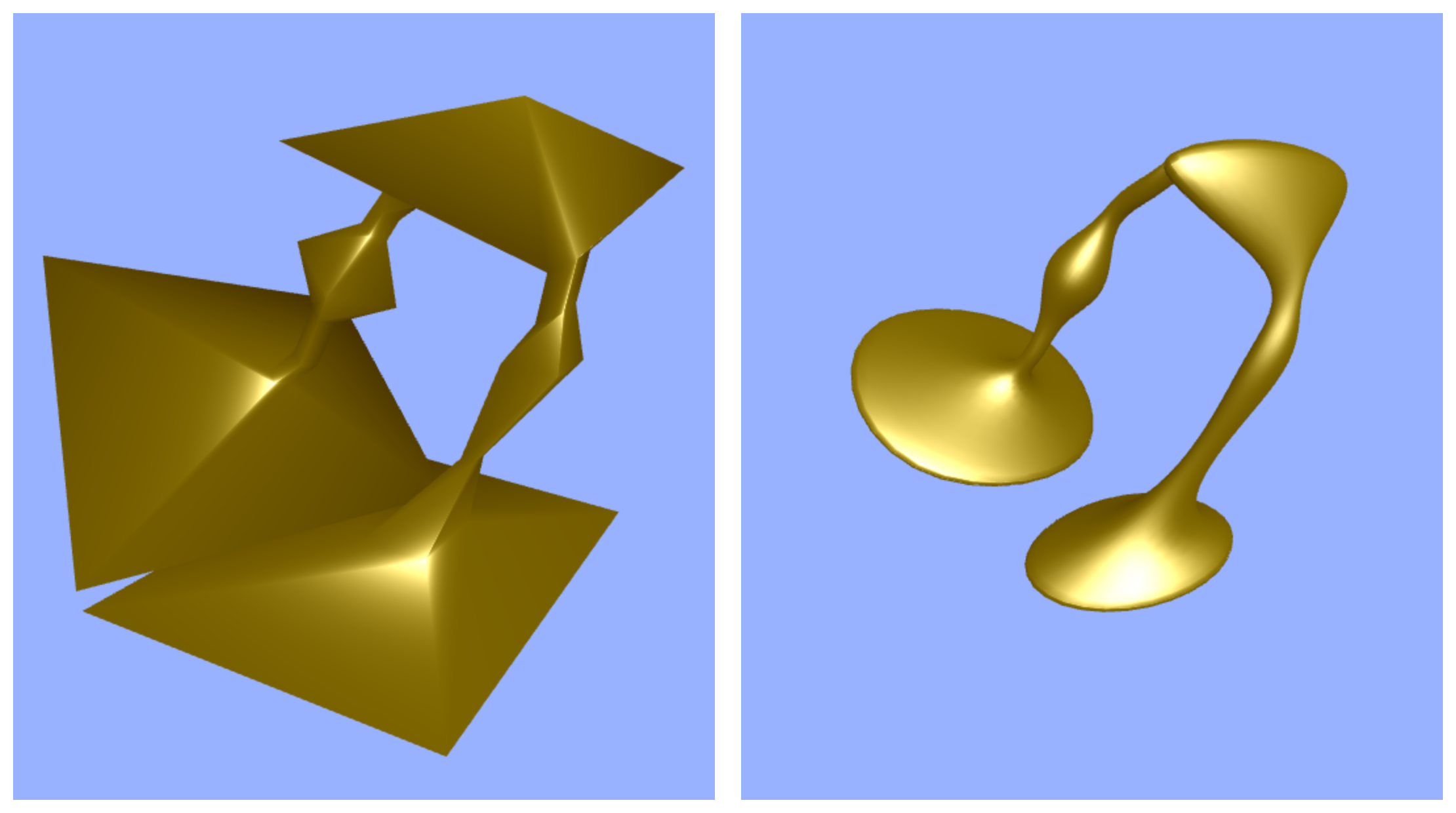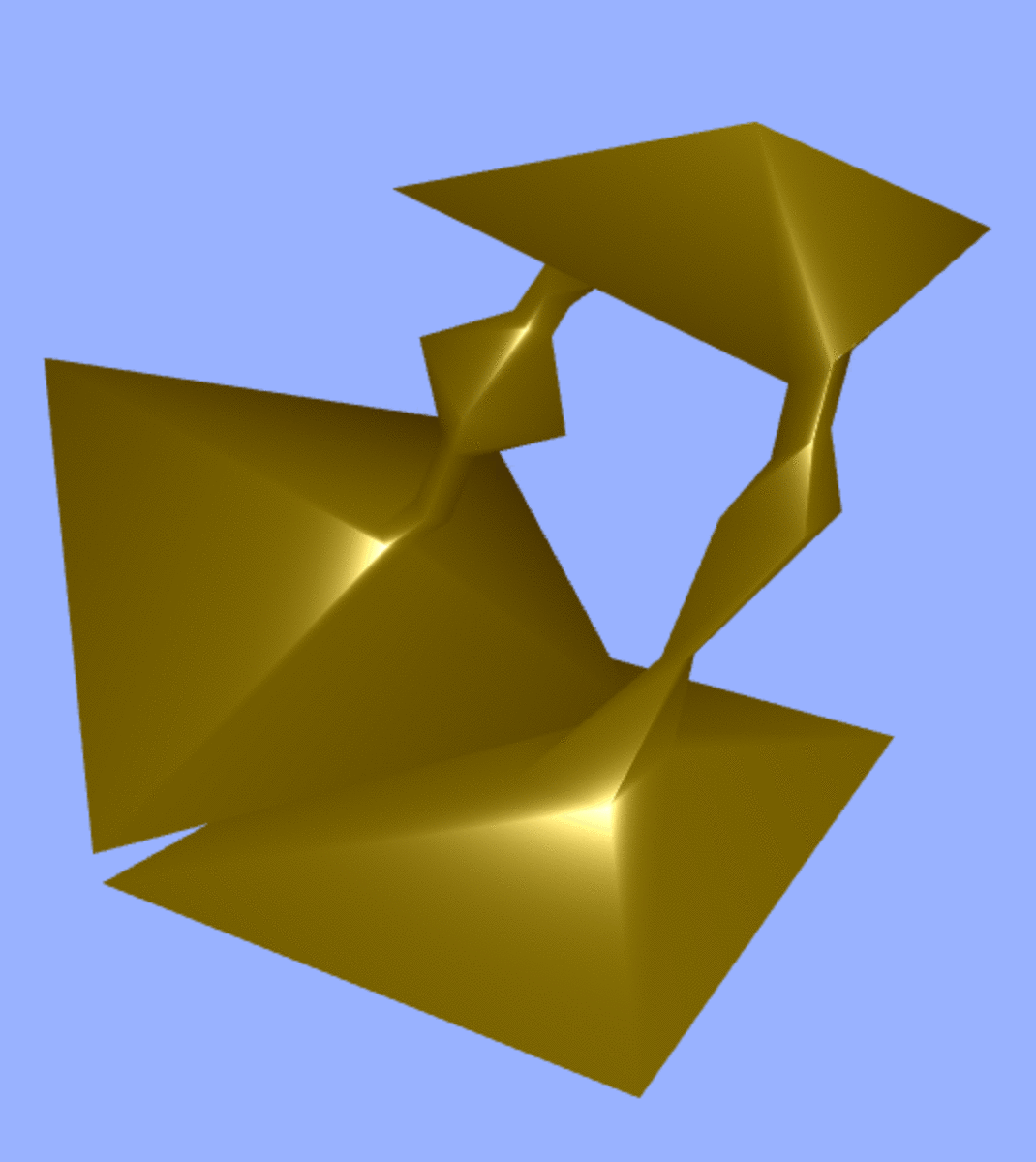This module implements the Catmull-Clark subdivision surface algorithm for WebGL usage. If you feed a low-poly, ugly mesh to this algorithm, the result will be a smooth, beautiful mesh. A demo is provided.
Below you can see what it looks like if you run the algorithm on a low-poly mesh:
Run the Catmull-Clark algorithm numSubdivisions times on the
mesh specified by positions and cells. Returns a subdivided mesh
in an object on the form {positions: subdividedPositions, cells: subdividedCells}
-
positionsThe vertex positions of input mesh on the form[ [1.0,2.0,3.0], [3.4,1.3,4.2],...] -
cellsThe indices of the input mesh. This is either a list of quad indices or a list of triangle indices. If quads, it is on the form[ [1,2,3,4], [8,9,10,11],...]. If triangles, it is on the form[ [1,2,3], [8,9,10],...]. And note that clockwise ordering of the indices is assumed! Finally, do note that Catmull-Clark is mostly meant to be used on meshes made with quads If used on triangular meshes, the quality of the subdivision is generally not as good. -
numSubdivisionsHow many times the Catmull-Clark algorithm will be run on the input mesh. The more times you run the algorithm, the smoother the output mesh will be. -
convertToTrianglesThe Catmull-Clark algorithm will result in a list of quads. If this parameter is true, then those quads will be converted to triangles, and returned. Else, the returned mesh is a list of quads. Defaults totrue.
Below we can see what happens as we increase the value of the parameter numSubdivisions


